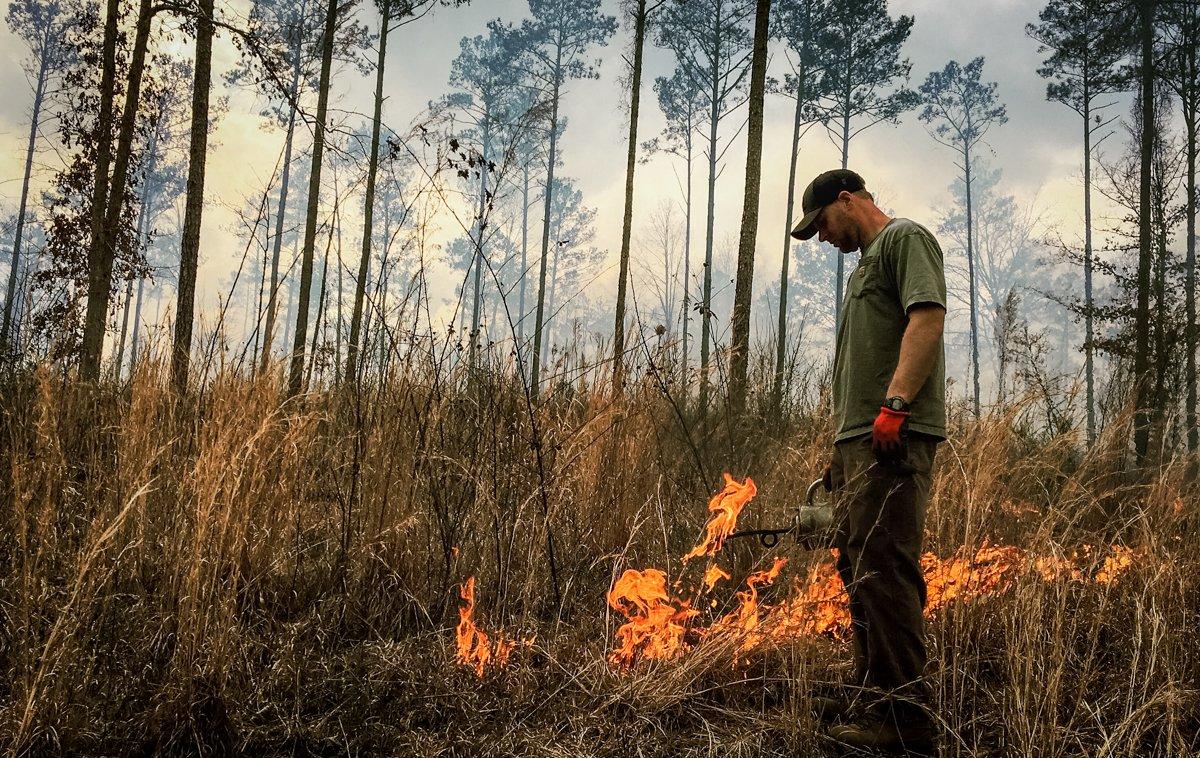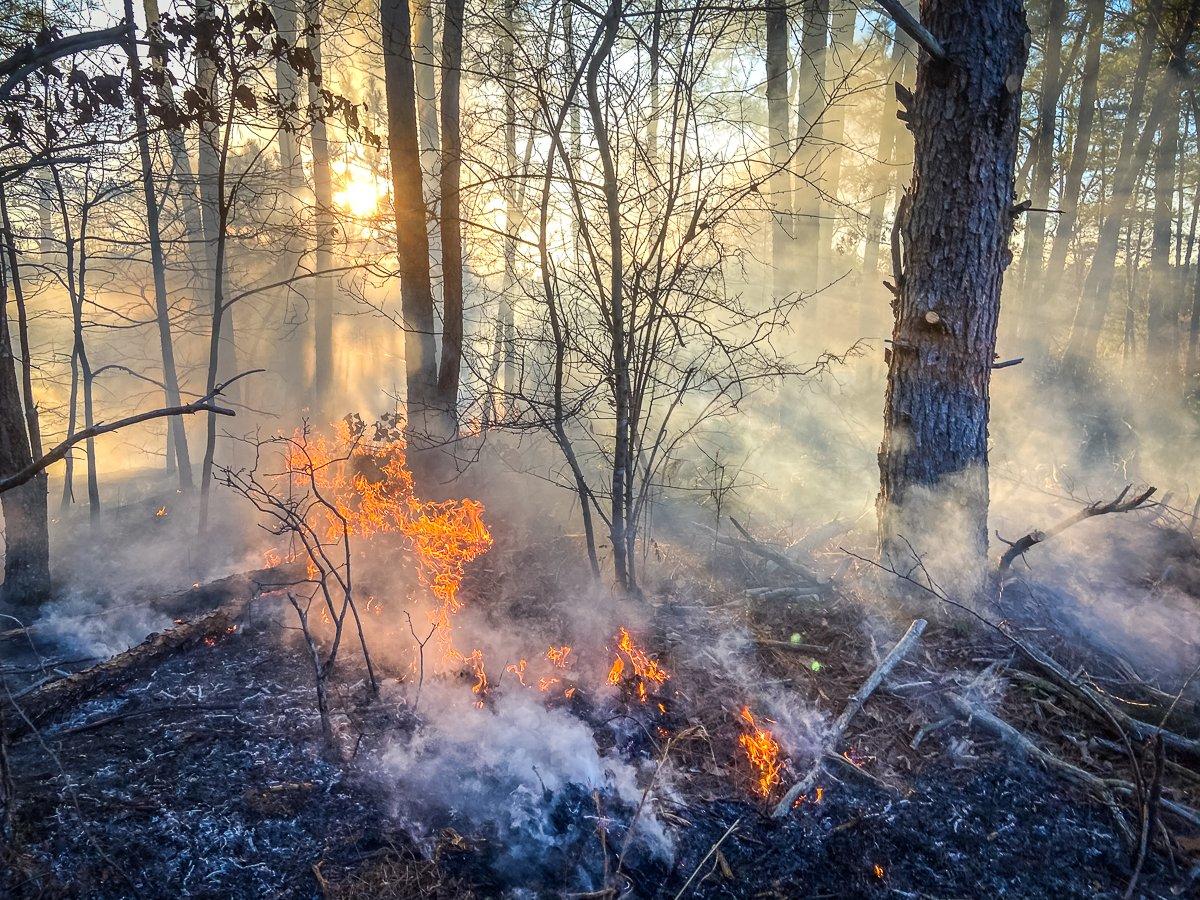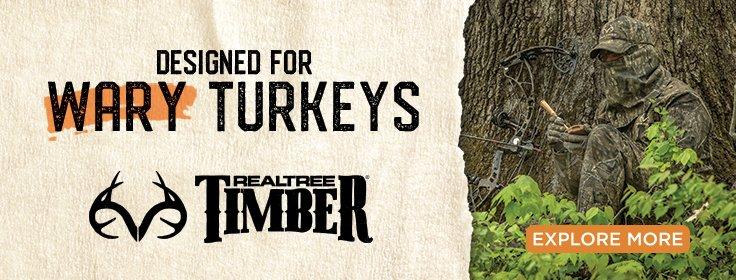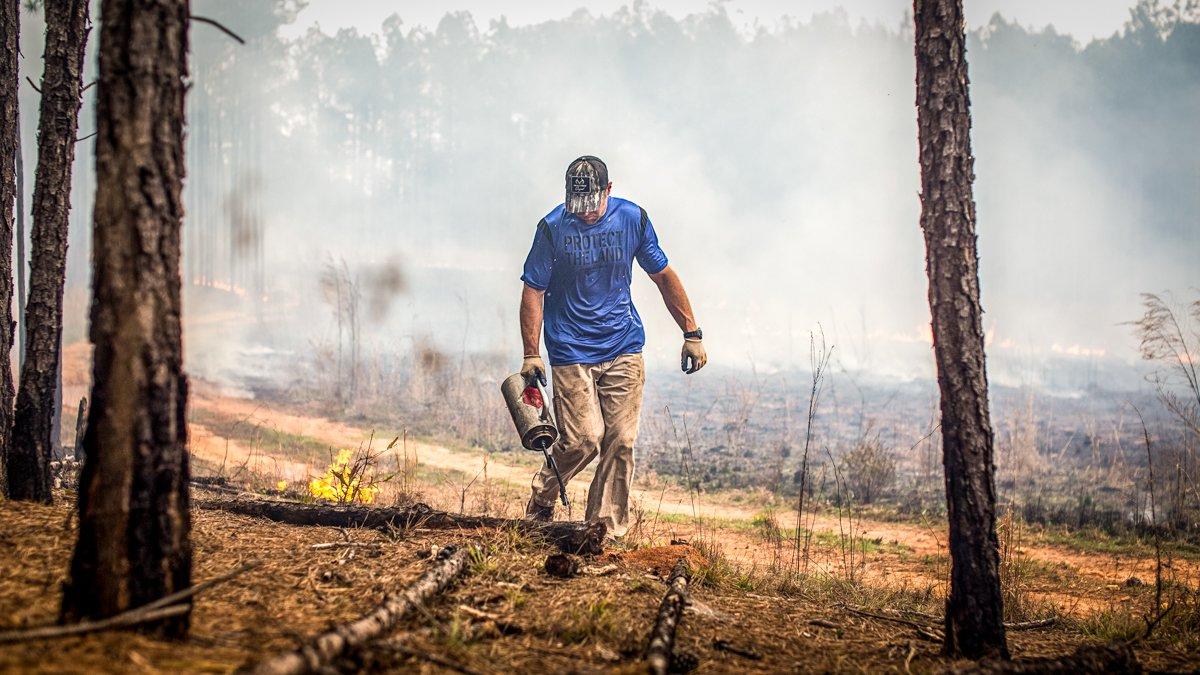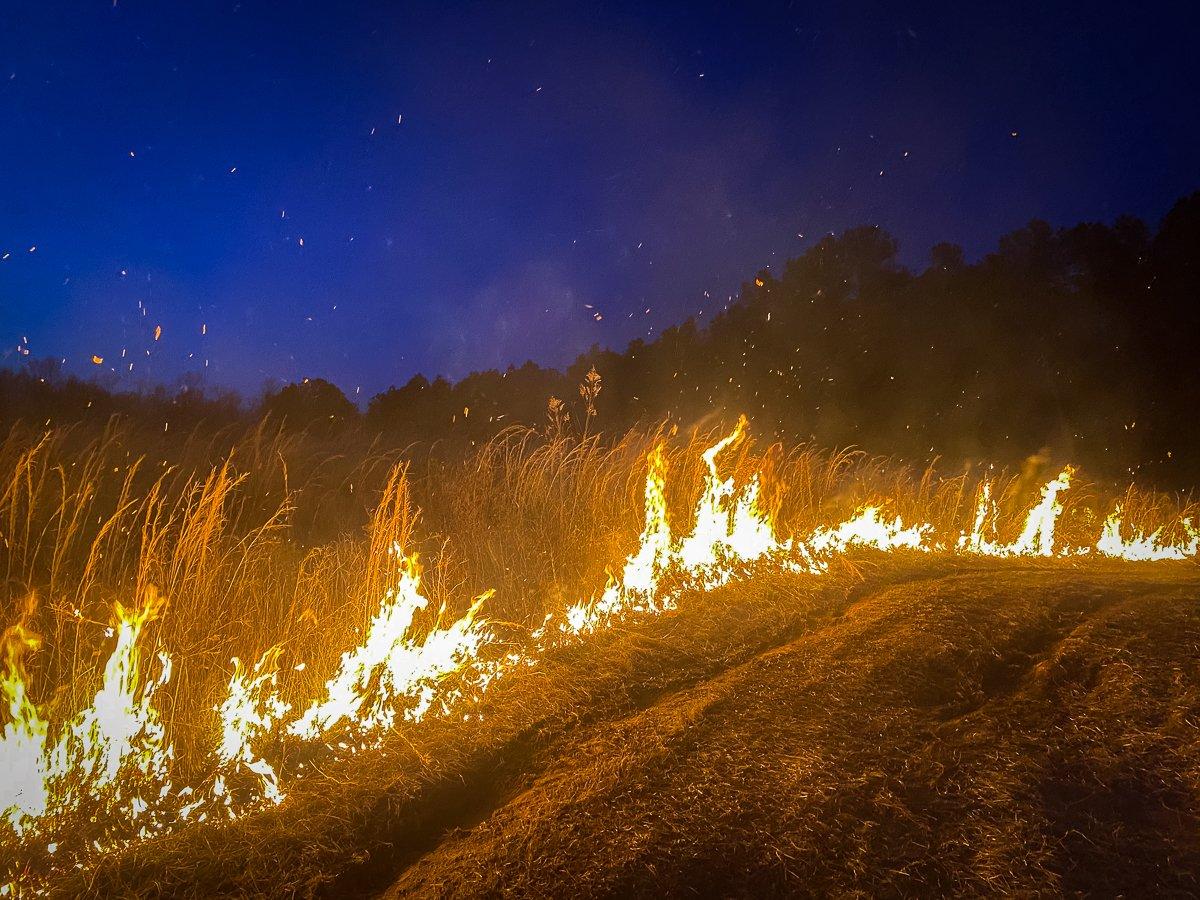Prescribed fire can work wonders for wildlife habitat, so long as you keep it safe
An unexpected wind swirl whipped the flames of what had been a slow backfire and sent them suddenly quartering uphill and across the field, full of dormant broom sage and plume grass. My buddy Danny and I were standing on top of the hill, next to a box blind, leaning on rakes and talking, when the heat and the smoke picked up. A swirling wind is an aggravation when you're deer hunting. When you're burning, the stakes are higher.
I hustled to the edge of the brush, sparked my drip torch, and lit another line to creep toward the blaze and effectively widen our firebreak. It burned inward slowly, but then the wind shifted back to its forecast and it became a headfire, racing toward the initial blaze.
I ran back up the hill, meeting Danny in the disked firebreak. The blaze had become bigger than planned but still seemed contained within our firebreaks. But then Danny noticed a widening ring of fire under the single towering pine tree behind us. It's a tree that gives shade to the box blind. A wayward ember must've caught the same surprise wind and settled right in the pine's fallen needles. We attacked it with rakes and backpack sprayers, and snuffed it out before it could creep to the box blind.
(Don't Miss: 5 Trapping Baits Nest-Raiding Raccoons Can't Resist)
The action settled within a few minutes, leaving the field black and silent, just as we'd hoped. There was a crowd of five or six of us there, and my buddy Ryan, who'd lit the initial backfire, came walking up the firebreak, wearing a backpack sprayer that was running low of water. That one almost got sporty on us, didn't it? he asked.
I've conducted dozens of burns on our land now, and that one was the first to get sportier than I liked. In truth, aside from the box blind, nothing was in real danger since there was an open clover plot and yet another firebreak between us and the property line. We had a crew of experienced people there, too, to surround the fire.
A swirling wind is an aggravation when you're deer hunting. When you're burning, the stakes are higher.
Still, it was a good reminder of the reality of things, when you're lighting fire. Say the words controlled burn to most professional habitat managers, and they'll frequently correct you: It's prescribed fire because you can't truly control a burn.
Prescribed fire is gaining popularity among private-land managers who want to better the habitat for wildlife. The effects and benefits of it are well documented. In fields, where I do most of my burning, fire is the most cost-effective way to set back plant growth and maintain the early successional habitat that's so attractive to whitetails, turkeys, and small game.
(Don't Miss: 10 Trees That Will Hold Deer on Your Hunting Property)
I like to burn in mid-March, just ahead of turkey season, because the burned areas green up almost immediately after a good rain, and the insects follow shortly after. It attracts bugging hens and the strutters with them like a narcotic. The vegetation then grows to just about the ideal height for turkey nesting in late spring, and it provides tons of high-value forage for whitetails during the summer. By late summer, many of the fields will be chest-high, providing valuable food and cover both.
But getting to that point requires planning and caution. It goes without saying to check the regulations for prescribed fire in your state, and to enlist someone with experience to help you on your first few efforts. But done right, the most dangerous thing about a prescribed fire should be riding the tractor to create firebreaks.
It's OK to admit that it's fun, too, like a bonfire with a purpose. Here's what to know.
Start Small, Go Slow, and Learn the Techniques
Dr. Marcus Lashley, with the Mississippi State University Deer Lab, has spent a good portion of his career studying the effects of fire on habitat and wildlife. He recommends land managers new to prescribed fire to start small. It's easier to deal with the situation when you can see the entire area being burned all at once, Lashley says. It's also less fearful for landowners. Of course, it's still fire. It will still burn things that will burn. So any time you're burning, you need to pay attention, use the wind to your advantage, and use firing techniques to your advantage. When you start using headfires and rushing things, that's when problems happen.
Backfiring is burning into the wind, and it's the way every prescribed fire should begin. On my place, we usually burn sections, 5 or so acres at a time, and I start by lighting the downwind edge of the field. Depending on the wind and fuel load, it can actually be a slow process to get a good burn line going, but I like to at least double the width of my dirt firebreak with ash before lighting anything upwind. As I'm backfiring with a drip torch, I usually have a buddy follow behind me with a backpack sprayer of water, just to be sure no stray embers flutter downwind, across the firebreak.
(Don't Miss: How to Build a Buck Bedding Area)
Starting out, it's safest to use backing fires, and do it slowly, Lashley says. You can burn an entire field with a backfire. It just takes a long time. As you get more experience, you realize how fast you can push things and stay safe. But if you want to get more aggressive and speed things up, you can use flanking fires, strips, or spotting headfires.
Once the backfire has doubled the size of my firebreak, I'll often walk 20 or 30 yards upwind, cut into the field, and light a headfire line, which will quickly burn toward the backing fire downwind, and become its own backing fire upwind. Once that settles, I go upwind another 20 yards, and do it again, until the field is burned completely. Even after several years of experience, that's as fast as I care to burn. Plus, it gives rabbits and other critters that may be in the field plenty of time and routes to escape.
A lot of people want to light a backfire and then circle it in (with a headfire), Lashley says. Going too fast is where problems start, and it can be problematic for the wildlife, too.
Be Overcautious
You can't overplan for a prescribed burn. Creating firebreaks is the critical first step. You need a continuous line of bare dirt between the area you plan to burn and the area you don't want burned. As a rule of thumb, the dirt should be twice as wide as the vegetation is tall.
Most people who plant food plots can make firebreaks, Lashley says. A tractor with a disk is a perfectly suitable way to make a really good one, particularly in an old field. Lashley points out that the firebreaks themselves can become excellent food plots. You can create a green firebreak with that succulent vegetation that doesn't burn. It's a great way to manage openings with high-quality habitat.
With that in mind, after a burn, I frequently sow my firebreaks down with red clover. It's an inexpensive perennial that's easy to broadcast and attractive to deer. But because it usually only lasts a couple of seasons anyway, I don't feel bad about disking it under every couple years, when it's time to freshen the firebreak and burn the field again.
Before burning, it's good to put together a written burn plan (and a requirement in some states). This should outline the area to be burned, the conditions needed, emergency contacts, the list of tools, and job descriptions for the help. Where I live, the sheriff's office must be notified ahead of a burn, and it's good to have that number saved. Concerned neighbors will inevitably call when they see the smoke and flames, and you can expect well-check calls from dispatchers.
On the ground, I like to have a truck or a UTV with a tank of water, and a tractor with a front-end loader or grader blade, as well as three or four buddies each wearing pump-style backpack sprayers. When we light a section of field, we circle it continuously with the sprayers, dousing out hotspots and embers as needed. At the end of the evening, my custom is to provide beer and barbecue, but your friends may have different requirements.
Most times, we don't use more than a couple of sprayer tanks of water between us, and we only start the tractor to drive it back to the shed. Boring burns are the best ones. But as I've seen firsthand, winds can swirl despite the forecast, and when you have a 5-acre fire going in the middle of that, you'll be happy for the extra precautions taken.
(Don't Miss: 7 Best Food Plot Shapes for Bowhunting Whitetails)

